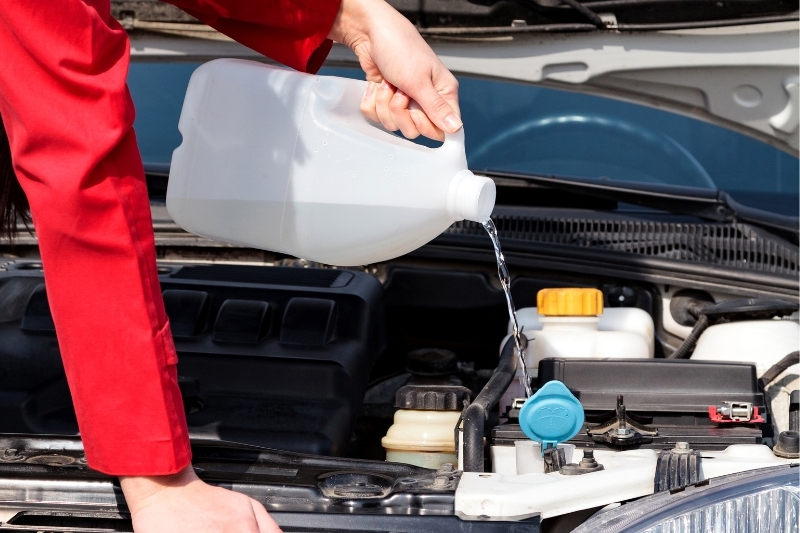Car fluids are the lifeblood of your automobile, and ensuring they are in top condition is crucial for the smooth and efficient operation of your car. In this comprehensive guide, I’ll walk you through the various types of car fluids, the tools and equipment needed, and a step-by-step process to exchange them like a pro.
Importance of Regular Fluid Exchanges
Regular fluid exchanges are essential for preserving the longevity and performance of your vehicle. Over time, these fluids can become contaminated, lose their lubricating properties, or simply wear out, leading to increased wear and tear on your car’s components. By staying on top of your fluid maintenance schedule, you can extend the lifespan of your engine, transmission, and other vital systems, saving you from costly repairs down the road.
Types of Car Fluids That Need to Be Exchanged
- Engine Oil: This is the most critical fluid in your car, responsible for lubricating the engine’s moving parts and preventing premature wear and tear.
- Transmission Fluid: Ensures the smooth and efficient operation of your car’s transmission, whether it’s an automatic or manual.
- Brake Fluid: Plays a crucial role in maintaining the integrity of your braking system, helping to ensure safe and reliable stopping power.
- Coolant (Antifreeze): Regulates the temperature of your engine, preventing overheating and potential damage.
- Power Steering Fluid: Keeps the steering system operating smoothly and effortlessly.
- Differential Fluid: Lubricates the differential, which is responsible for distributing power to the wheels.
Tools and Equipment Needed for Fluid Exchanges
To effectively exchange your car’s fluids, you’ll need the following tools and equipment:
- Fluid drain pans or containers
- Fluid transfer pumps or siphons
- Wrenches and sockets for accessing fluid drain plugs
- Rags or paper towels for cleaning up any spills
- Funnels for pouring new fluid into the appropriate reservoirs
- Gloves and eye protection for safety
Step-by-Step Guide to Exchanging Car Fluids
- Engine Oil Exchange:
- Locate the oil drain plug, typically located at the bottom of the oil pan.
- Place a drain pan underneath the plug and loosen it to allow the old oil to drain.
- Once the oil has fully drained, replace the drain plug and tighten it securely.
- Locate the oil fill cap and pour in the recommended amount and type of new oil.
- Start the engine and check for any leaks, then dispose of the used oil properly.
- Transmission Fluid Exchange:
- Locate the transmission fluid drain plug, which may be on the side or bottom of the transmission.
- Place a drain pan underneath and loosen the plug to allow the old fluid to drain.
- Once the fluid has drained, replace the plug and tighten it securely.
- Use a fluid transfer pump or siphon to add the recommended amount and type of new transmission fluid through the fill plug.
- Start the engine and check for any leaks, then dispose of the used fluid properly.
- Brake Fluid Exchange:
- Locate the brake fluid reservoir, typically under the hood near the master cylinder.
- Use a turkey baster or fluid transfer pump to remove the old brake fluid.
- Refill the reservoir with the recommended type of new brake fluid.
- Bleed the brake system by depressing the brake pedal and opening the bleeder valves at each wheel.
- Continue this process until the fluid runs clear and the pedal feels firm.
- Coolant (Antifreeze) Exchange:
- Locate the radiator or overflow tank and allow the engine to cool completely.
- Place a drain pan underneath the radiator drain plug and loosen it to allow the old coolant to drain.
- Once the coolant has drained, replace the plug and tighten it securely.
- Use a funnel to pour the recommended type and amount of new coolant into the radiator or overflow tank.
- Start the engine and check for any leaks, then dispose of the used coolant properly.
- Power Steering Fluid Exchange:
- Locate the power steering fluid reservoir, typically near the power steering pump.
- Use a fluid transfer pump or siphon to remove the old power steering fluid.
- Refill the reservoir with the recommended type and amount of new power steering fluid.
- Start the engine and turn the steering wheel from lock to lock to circulate the new fluid.
- Check the fluid level and top up as needed, then dispose of the used fluid properly.
- Differential Fluid Exchange:
- Locate the differential drain plug, typically on the bottom of the differential housing.
- Place a drain pan underneath and loosen the plug to allow the old fluid to drain.
- Once the fluid has drained, replace the plug and tighten it securely.
- Use a funnel to pour the recommended type and amount of new differential fluid through the fill plug.
- Start the vehicle and check for any leaks, then dispose of the used fluid properly.
Tips for Efficient and Safe Fluid Exchanges
- Follow the Manufacturer’s Recommendations: Always refer to your vehicle’s owner’s manual for the recommended fluid types, quantities, and exchange intervals.
- Invest in Quality Fluids: Use high-quality, brand-name fluids that meet or exceed the manufacturer’s specifications.
- Work in a Well-Ventilated Area: Ensure you have proper ventilation to avoid exposure to harmful fumes or spills.
- Wear Appropriate Protective Gear: Gloves and eye protection can help prevent accidental spills or splashes.
- Dispose of Used Fluids Properly: Check with your local authorities for the proper disposal methods in your area.
Common Mistakes to Avoid During Fluid Exchanges
- Forgetting to Replace Gaskets or Seals: Ensure you replace any worn or damaged gaskets or seals to prevent leaks.
- Overfilling Fluid Reservoirs: Carefully follow the recommended fluid levels to avoid damage to your car’s components.
- Using the Wrong Fluid Type: Always use the fluid type specified by the manufacturer to ensure compatibility and optimal performance.
- Failing to Bleed the Brake System: Neglecting to bleed the brake system can lead to a spongy or ineffective brake pedal.
- Neglecting to Dispose of Used Fluids Properly: Improper disposal of used fluids can harm the environment and may be illegal in some areas.
How Often Should Car Fluids Be Exchanged?
The recommended fluid exchange intervals can vary depending on your vehicle’s make, model, and age, as well as your driving conditions. As a general guideline:
- Engine Oil: Every 5,000 to 10,000 miles or as specified by the manufacturer
- Transmission Fluid: Every 30,000 to 60,000 miles or as specified by the manufacturer
- Brake Fluid: Every 2 to 3 years or as specified by the manufacturer
- Coolant (Antifreeze): Every 30,000 to 60,000 miles or as specified by the manufacturer
- Power Steering Fluid: Every 30,000 to 60,000 miles or as specified by the manufacturer
- Differential Fluid: Every 30,000 to 60,000 miles or as specified by the manufacturer
Benefits of Professional Fluid Exchanges
While it is possible to perform fluid exchanges yourself, there are several benefits to having them done by a professional mechanic:
- Expertise and Experience: Mechanics have the knowledge and skills to properly diagnose and address any issues that may arise during the fluid exchange process.
- Proper Disposal of Used Fluids: Professionals have the necessary equipment and protocols to dispose of used fluids in an environmentally responsible manner.
- Warranty Compliance: Having your fluids exchanged by a professional can help ensure that any applicable warranties on your vehicle remain valid.
- Time and Convenience: Letting a professional handle the fluid exchanges can save you time and hassle, allowing you to focus on other aspects of vehicle maintenance.
Conclusion: Maintaining Your Car’s Performance Through Proper Fluid Exchanges
Proper and regular fluid exchanges are essential for maintaining the health and performance of your vehicle. By following the steps outlined in this guide, you can confidently exchange your car’s fluids like a pro, ensuring your vehicle runs smoothly and efficiently for years to come. Remember to always refer to your owner’s manual, use high-quality fluids, and dispose of used fluids responsibly. With this knowledge, you’ll be well on your way to keeping your car in top condition.





